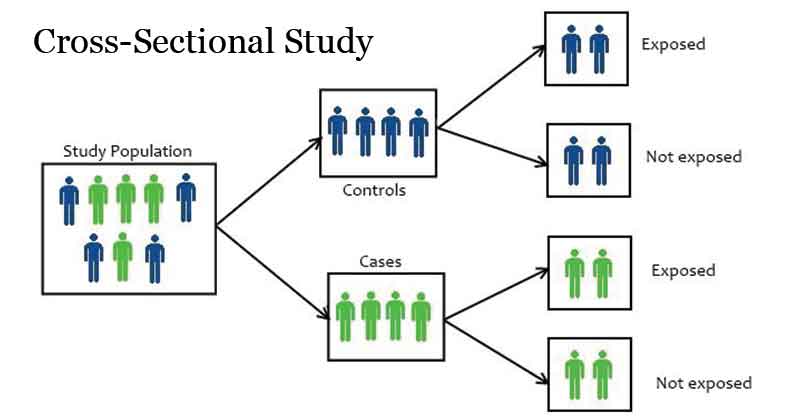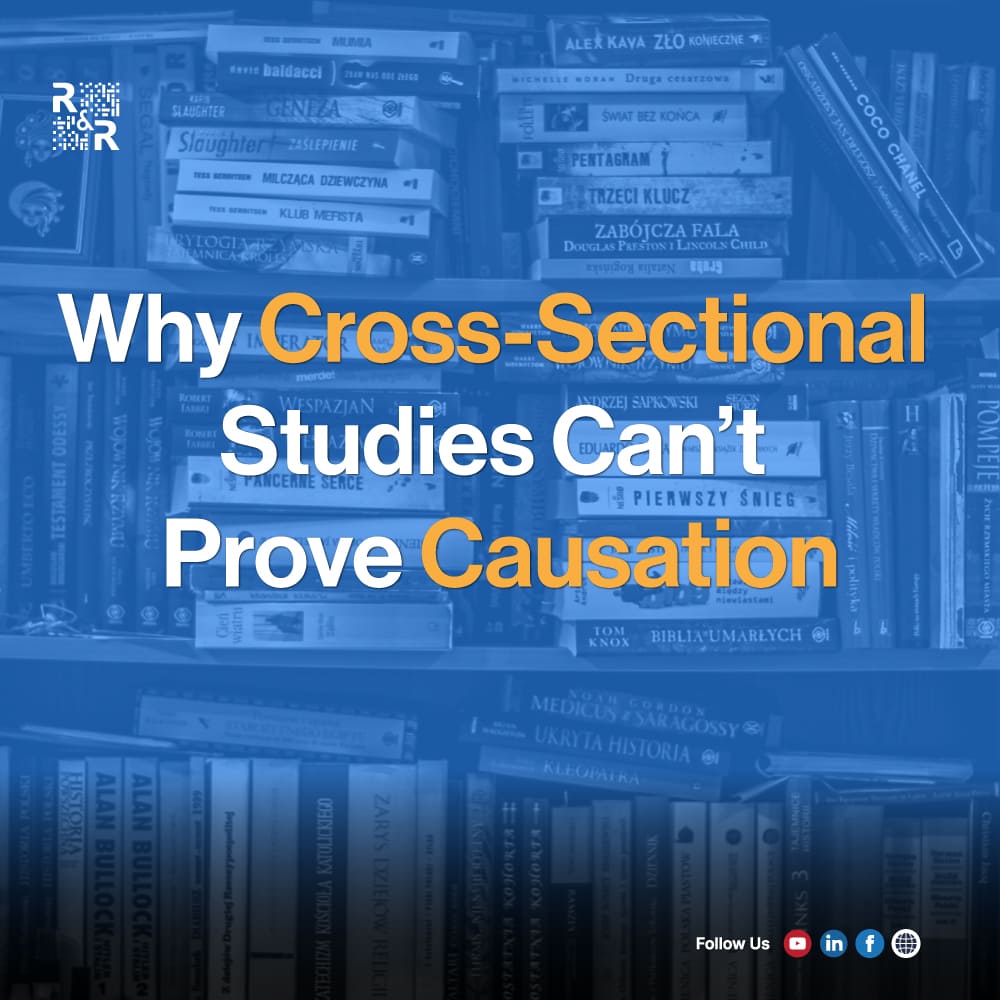What is a Cross-Sectional Study?
A cross-sectional study collects data from a sample at one point in time. It can identify associations between variables — for instance, between sleep quality and stress levels — but because exposures and outcomes are measured simultaneously, the sequence of events remains unknown. Biology Insights These studies are efficient, cost-effective, and useful for estimating prevalence and generating hypotheses.

Why Researchers Mistake Correlation for Causation
1. Temporal Order: The Missing Link
Causation requires that the cause precedes the effect — but cross-sectional data provide only a “snapshot”. Because exposure and outcome are measured simultaneously, we cannot know which came first.
2. Reverse Causality and Endogeneity
If you find a link between two variables, it might be that the “effect” is influencing the “cause” — this is reverse causality. Endogeneity means that independent and dependent variables influence each other simultaneously. OUP Academic
3. Confounders & Hidden Biases
Uncontrolled confounding variables can create spurious associations. Selection bias, recall bias, and measurement bias further obscure true causal links. Library & Information Management
A succinct chart below illustrates how these threats stack up:
| Threat | What it means | Why it undermines causation |
|---|---|---|
| Temporal ambiguity | Don’t know which happened first | Cannot assert cause → effect |
| Reverse causality | Outcome may influence exposure | Direction of influence is unknown |
| Endogeneity | Mutual influence of variables | Cause and effect blur |
| Confounding bias | Third-variable influences both | Association may be spurious |
| Selection/recall bias | Sample or reporting distortions | Validity of findings compromised |
What Study Designs Can Support Causality
Longitudinal Designs
Following subjects over time allows the researcher to observe whether exposure precedes outcome and how it evolves. These designs mitigate temporal ambiguity. OUP Academic
Experimental & Quasi-Experimental Approaches
Randomised controlled trials (RCTs), interventions, and panel data with fixed-effects or structural equation modelling (SEM) provide stronger grounds for causal claims by controlling time and confounding variables.
Practical Guidance for Researchers & Students
- Use cautious language: In any cross-sectional study avoid terms like “causes” or “leads to”; instead use “is associated with”, “may be linked to”.
- Highlight limitations: Always discuss temporal uncertainty, reverse causality potential, and uncontrolled confounders.
- Consider including retrospective questions: If you must use cross-sectional design, ask participants about past exposures or events — though this does not fully restore temporal sequence.
- Triangulate with other designs: Wherever possible, follow up cross-sectional findings with longitudinal or experimental research.
- Visualise threats: Use charts showing bias, directionality, and study design comparisons to help readers quickly grasp key concepts.
- SEO-friendly structure: Use sub-heads, bullet lists, and bold key terms to aid readability and search-engine indexing.
Why It Matters for Your Research & Consulting Work
At Research & Report Consulting, we emphasise methodological rigour. Interpreting cross-sectional associations as causal claims can mislead decision-makers, skew policy recommendations, and diminish research credibility. By mastering the limits of design and aligning claims with evidence, you strengthen your insights, safeguard your reputation, and serve your clients or scholarly audience with precision.
References
- Shahar E, Shahar D. Causal diagrams and the cross-sectional study. Clin Epidemiol. 2013;5:57-65. PMC
- “Can cross-sectional studies contribute to causal inference? It depends.” American Journal of Epidemiology. 2022;192(4):514-516. OUP Academic
- “What are the Limitations of Cross-Sectional Studies?” CancerScience Knowledgebase. Cancer Science
Have you encountered a situation where a strong association from a cross-sectional study was misinterpreted as causation? Share your experience or thoughts below!
Want research service from Research & Report experts? Please contact us.

